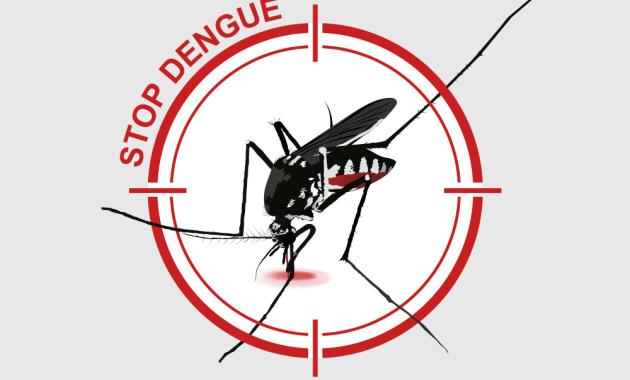
Dengue is a mosquito-borne (Ae. aegypti or Ae. albopictus) viral infection that affects millions of people worldwide each year. The global incidence of dengue has increased dramatically in recent years, with about 400 million people being infected annually [1]. Dengue fever typically causes flu-like symptoms such as high fever, headache, joint and muscle pain, and rash which last for about 2-7 days. It can sometimes progress to a severe and potentially fatal form followed by shock or internal bleeding [2].
National Dengue Day was established by the Ministry of Health and Family Welfare to raise awareness of the potentially lethal nature of dengue and to stop its widespread transmission. Every year 16th May is observed as a day to educate, carry out continual research, and act to combat this debilitating and life-threatening disease.
Many common misconceptions and myths persist around this disease, which can lead to confusion, fear, and ineffective prevention and control measures. To combat this, it’s essential to separate fact from fiction regarding dengue fever.
Here are some common myths and misconceptions:
Myth: Dengue can be transmitted from one person to another.
Fact: Dengue is spread through the bite of infected Aedes mosquitoes and cannot be transmitted from person to person [3]. However, an infected pregnant mother can pass on the virus to the fetus. Also, transmission via blood products, organ donation, and transfusions are rare.
Your health is of utmost importance. Don’t let dengue go unnoticed!
Consult a doctor now.
Myth: Dengue only affects people in rural areas or developing countries.
Fact: Dengue can occur in any country developed or developing, where the Aedes mosquito is present, including tropical and sub-tropical climates worldwide, in both urban and semi-urban areas [1].
Myth: Only children are at risk of getting dengue.
Fact: While children and the elderly are two risk categories that are more vulnerable to risks due to their impaired immune systems, even healthy people can catch dengue or develop severe symptoms. People of all ages can get dengue, although severe cases are more common in children and the elderly [4].
Myth: There is a cure for dengue.
Fact: There is no specific cure for dengue, but early detection and proper medical care can reduce the risk of severe complications and improve outcomes [5]. The dengue vaccine, Dengvaxia, protects children from hospitalizations, and severe forms among children who previously had dengue in 80% of cases [6].
Myth: Dengue is caused by poor sanitation.
Fact: Dengue is primarily spread through infected Aedes mosquitoes laying their larvae in still water. Maintaining good sanitation and hygiene can help prevent mosquito breeding sites [7].
Myth: Dengue and COVID cannot happen at the same time.
Fact: Also known as co-infection, it is possible for a person to have viral strains for both dengue as well as COVID. COVID and dengue share similar symptoms such as fever, gastrointestinal distress, nausea, and myalgia in the early stage [8].
Myth: Dengue only affects people who have never had the virus before.
Fact: There are four different types of dengue virus and infection with one type does not provide immunity to the others, leaving you vulnerable to the other versions [2]. This means you may get infected with dengue 4 times in a lifetime.
Early detection is key! Book your Dengue test and stay safe.
Book here!
Myth: Mosquito repellent is the only way to protect yourself from dengue.
Fact: While mosquito repellent can help prevent mosquito bites, other measures such as wearing long-sleeved clothing and using mosquito nets can also reduce the risk of dengue infection [1].
Keep Dengue at bay with mosquito repellents.
Get yours today!
By understanding the real risks, symptoms, and prevention strategies, we can better protect ourselves and our communities from this debilitating and potentially life-threatening illness. A timely reality check on dengue can help us strive toward a world where this preventable disease is no longer a threat to public health.
(The article is written by Dr.Subita Alagh, Senior Executive, and reviewed by Dr. Swati Mishra, Medical Editor)
References
1. World Health Organization: Dengue and severe dengue
https://www.who.int/news-room/fact-sheets/detail/dengue-and-severe-dengue
2. Centers for Disease Control and Prevention: About Dengue: What You Need to Know
https://www.cdc.gov/dengue/symptoms/index.html
3. Centers for Disease Control and Prevention: Areas with Risk of Dengue
https://www.cdc.gov/dengue/areaswithrisk/index.html
4. Dengue in infants: an overview, Amita Jain and Umesh C. Chaturvedi
FEMS Immunology & Medical Microbiology, Volume 59, Issue 2, July 2010, Pages 119–130
https://doi.org/10.1111/j.1574-695X.2010.00670.x
5. Centers for Disease Control and Prevention: Symptoms and Treatment
https://www.cdc.gov/dengue/symptoms/index.html
6. Dengue Vaccination: What Everyone Should Know
7. The Water Project: Cholera, Dengue Fever, and Malaria: The Unquestionable Link to Water
8. Centers for Disease Control and Prevention: Dengue and COVID-19